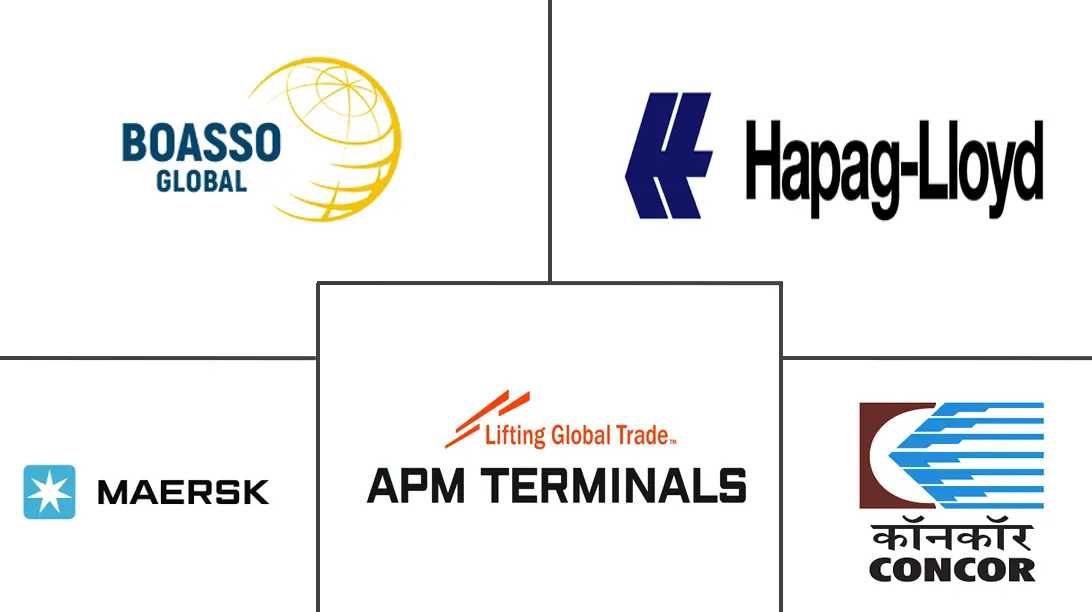Market Size of Inland Container Depot And Dry Port Industry

| Study Period | 2020 - 2029 |
| Market Size (2024) | USD 29.44 Billion |
| Market Size (2029) | USD 39.14 Billion |
| CAGR (2024 - 2029) | > 5.45 % |
| Fastest Growing Market | North America |
| Largest Market | Asia Pacific |
| Market Concentration | Medium |
Major Players
*Disclaimer: Major Players sorted in no particular order |
Inland Container Depot and Dry Port Market Analysis
The Inland Container Depot And Dry Port Market size is estimated at USD 29.44 billion in 2024, and is expected to reach USD 39.14 billion by 2029, growing at a CAGR of greater than 5.45% during the forecast period (2024-2029).
- The inland container depot and dry port industry faced a downturn due to port closures, congestion, and fuel price hikes, largely due to the COVID-19 pandemic. In 2020, global container transport volumes dipped by approximately 0.8%, directly impacting the market studied. Conversely, a recent surge in container freight rates, attributed to the Red Sea crisis, has dissuaded major players from investing in container storage and maintenance.
- Companies opting for inland container depots (ICDs) tailor their choices based on the nature of the cargo, which can range from cars and merchandise to crude oil and minerals. After the COVID-19 pandemic, the global market witnessed rising demand for ICDs. This surge was fueled by the expanding domestic and international e-commerce markets, improving trade relations, and the proliferation of free-trade agreements. Notably, global goods trade hit USD 2 trillion in 2023, as reported by the UN Trade and Development, a trend expected to persist, propelling market growth.
- The market's growth is primarily driven by escalating maritime trade and the increasing demand for container handling services. However, market growth is restrained due to the challenges of high port and storage service costs. The market is poised for new opportunities, especially with the advent of cutting-edge technologies like artificial intelligence, automation, IoT, and robotics.
- While Asia-Pacific leads the market, North America emerges as the fastest-growing region. Asia-Pacific, witnessing a surge in new port investments, stands out, with India alone injecting over USD 82 billion into 400+ ports. Not to be outdone, China, Singapore, Japan, and the Philippines actively embrace new technologies in their port developments. In contrast, North America boasts a robust presence of port and container handling entities.

